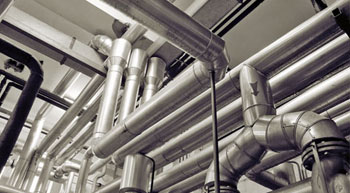
Cost reduction opportunities in compressed air systems
Leaks are a source of waste. Leaks can be a significant source of wasted energy in a compressed air system, sometimes wasting 20-30 per cent of a compressor’s output.
Leaks are a source of waste. Leaks can be a significant source of wasted energy in a compressed air system, sometimes wasting 20-30 per cent of a compressor’s output.
A Typical plant that has not been well maintained will likely have a leak rate equal to 20-30 per cent of total compressed air production capacity or more.
On the other hand, proactive leak detection and repair can reduce leaks to less than 5-10 per cent of compressor output.
In addition to being a source of wasted energy, leaks can also contribute to other operating losses. Leaks,
- Cause a drop in system pressure, which can make machines function less efficiently, adversely affecting production.
- Shorten the life of almost all supply system equipment including the compressor itself by forcing the equipment to operate more frequently.
- Cause increased running time, which can also lead to additional maintenance requirements and increased unscheduled downtime and
- Can lead to adding unnecessary compressor capacity.
Leak detection: Since air leaks are almost impossible to see, other methods must be used to locate them. The best way to detect leaks is to use an very accurate and advanced ultrasonic acoustic detector, which can filter the background noises and recognise the high frequency associated with air leaks. These instruments consist of directional microphones, amplifiers, audio filters and usually have visual indicators and earphones to detect leaks. Since Ultrasound is directional in transmission, the signal is loudest at its source. By generally scanning around a test area, it is possible to very quickly locate a leak site and find its location.
For this reason, ultrasonic leak detection is not only fast, it is also very accurate.
Documentation: Establishing an effective leakage management programme is a key step in managing a compressed air system. With a leak tag programme, the leak is identified, tagged and logged for a repair at a later time. Documentation should include the location of leak, type of leak and the estimated cost of leak. The documentation should be compatible with the predictive maintenance programme of the facility. Further documenting the repairs and the type of leaks can also indicate equipment that is a reoccurring problem. When this occurs, the process should be looked at for a root cause and permanent solution should be developed to stop the reoccurring air leaks.
Tracking & Verification: By comparing before and after, the effectiveness of the programme and the savings can be determined. Air leaks cntinue to occur so the program has to be ongoing. Periodic reviews should be done on the system and the process repeated as necessary to maintain system efficiency. A good compressed air system leak management programme is very important in maintaining the efficiency, reliability, stability and cost effectiveness of any compressed air system.
The author is Managing Director – Asia Pacific, Systel Energy Solutions (India) Pvt Ltd, Coimbatore.
He can be contacted at: hidhay@systel.asia.



… [Trackback]
[…] Read More Info here to that Topic: indiantextilejournal.com/cost-reduction-opportunities-in-compressed-air-systems/ […]
… [Trackback]
[…] Find More here on that Topic: indiantextilejournal.com/cost-reduction-opportunities-in-compressed-air-systems/ […]